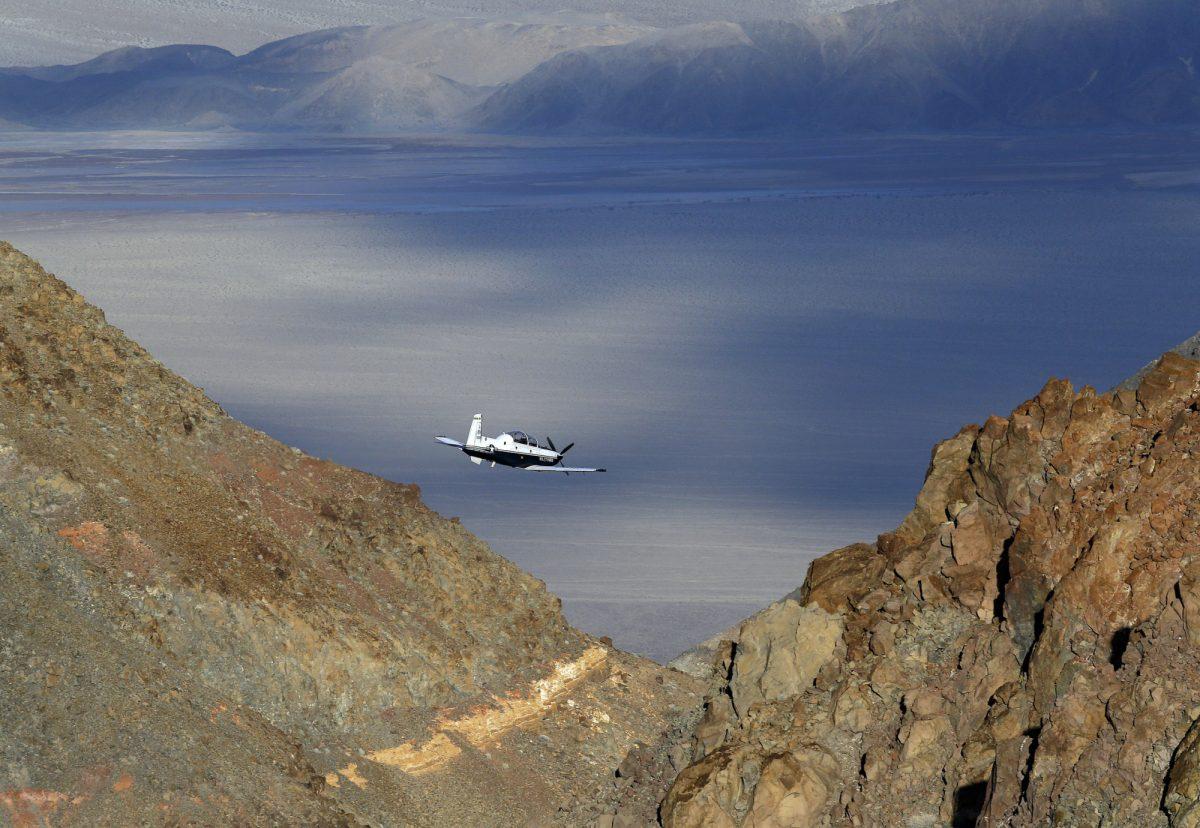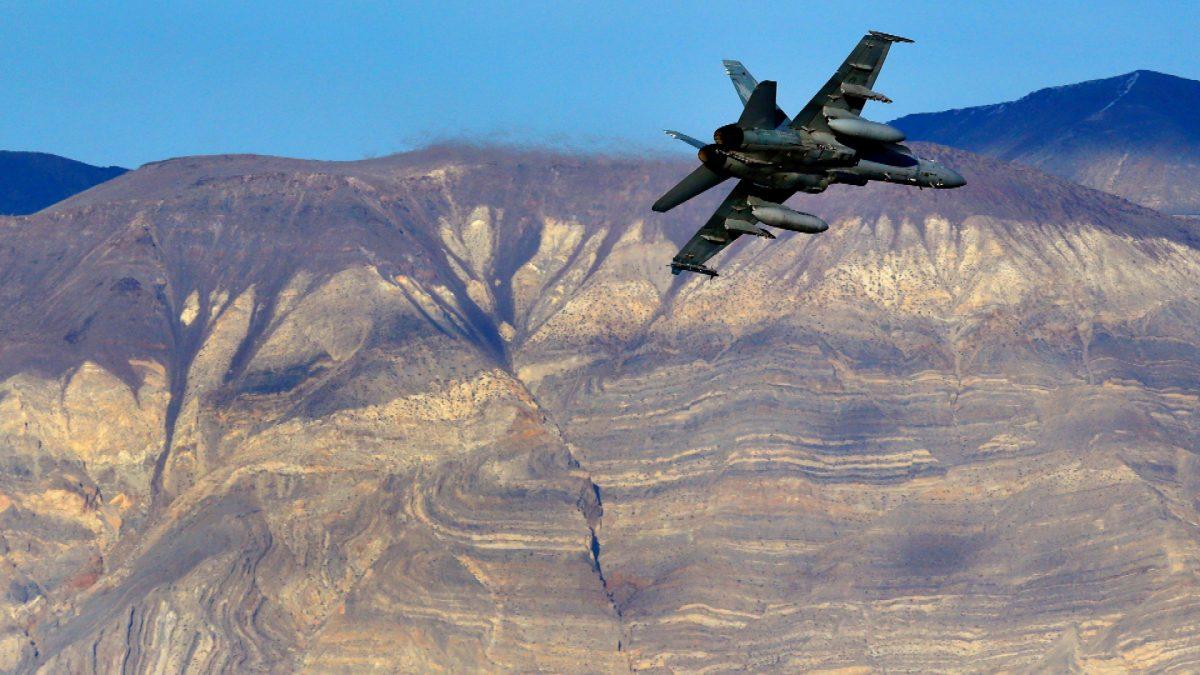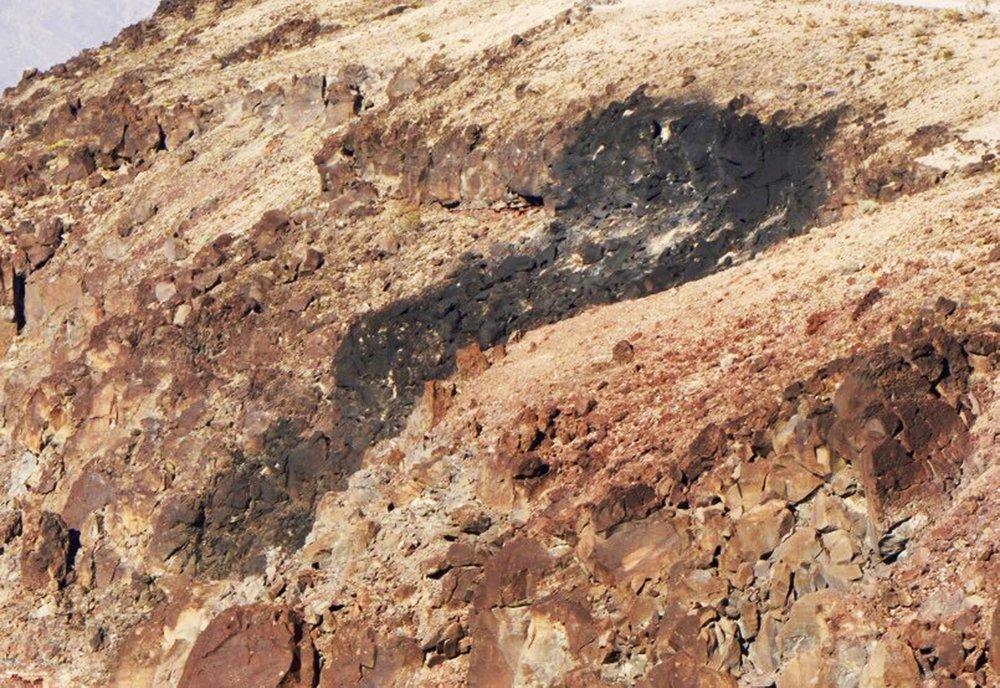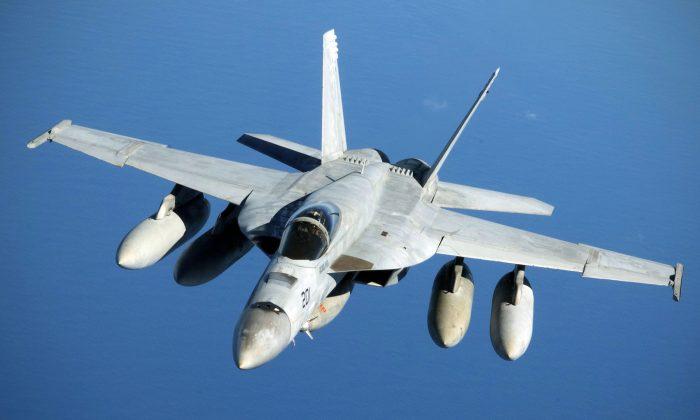The crash sent dark smoke billowing in the air, said Aaron Cassell, who was working at his family’s Panamint Springs Resort about 10 miles away and was the first to report the crash to park dispatch.
“I just saw a black mushroom cloud go up,” Cassell told The Associated Press. “Typically you don’t see a mushroom cloud in the desert.”
A search was underway for the pilot of the single-seat F/A-18 Super Hornet that was on a routine training mission, said Lt. Cmdr. Lydia Bock, spokeswoman for Naval Air Station Lemoore in California’s Central Valley.
“The status of the pilot is unknown at this time,” Bock said about four hours after the crash.
Ambulances were sent to the crash site near Father Crowley Overlook, said park spokesman Patrick Taylor. He said initial reports were that seven park visitors had minor injuries. KABC-TV spoke to tourists who said they were treated at a hospital for minor burns and cuts from flying fragments after the plane crashed and exploded.
The injured tourists told the news station they were taking photos of the sweeping landscape when the jet screamed into view and slammed into the canyon wall.
The lookout point about 160 miles north of Los Angeles is popular with photographers and aviation buffs who gawk at jets flying in the steep, narrow canyon. Officials closed the area after the crash.


U.S. and foreign militaries train pilots and test jets in the gorge officially called Rainbow Canyon near the park’s western entrance. Military flights there date back to World War II.
The chasm got its nickname because mineral-rich soil and red, gray and pink walls bring to mind the home planet of “Star Wars” character Luke Skywalker.
Training flights are almost a daily feature with jets thundering below the rim of the canyon and passing so close viewers can see the pilots’ facial expressions.
Cassell said he heard jets roaring through the area and then saw the cloud of smoke.
“It looked like a bomb,” Cassell said. “To me that speaks of a very violent impact.”

A jet that was following the downed craft pulled up and began circling, Cassell said. He didn’t see any parachute.
His father drove up to the area after the crash and saw a large black scorch mark and shattered parts of the jet scattered throughout the area between the parking lot and lookout, Cassell said. A nose cone from the jet was the size of a bowling ball and the rest of the debris was no larger than a ball cap.
The jet was from strike fighter squadron VFA-151 stationed at Lemoore. The squadron is part of an air group attached to the aircraft carrier USS John C. Stennis.
The Super Hornet is a twin-engine warplane designed to fly from either aircraft carriers or ground bases on both air-superiority and ground-attack missions.






Friends Read Free